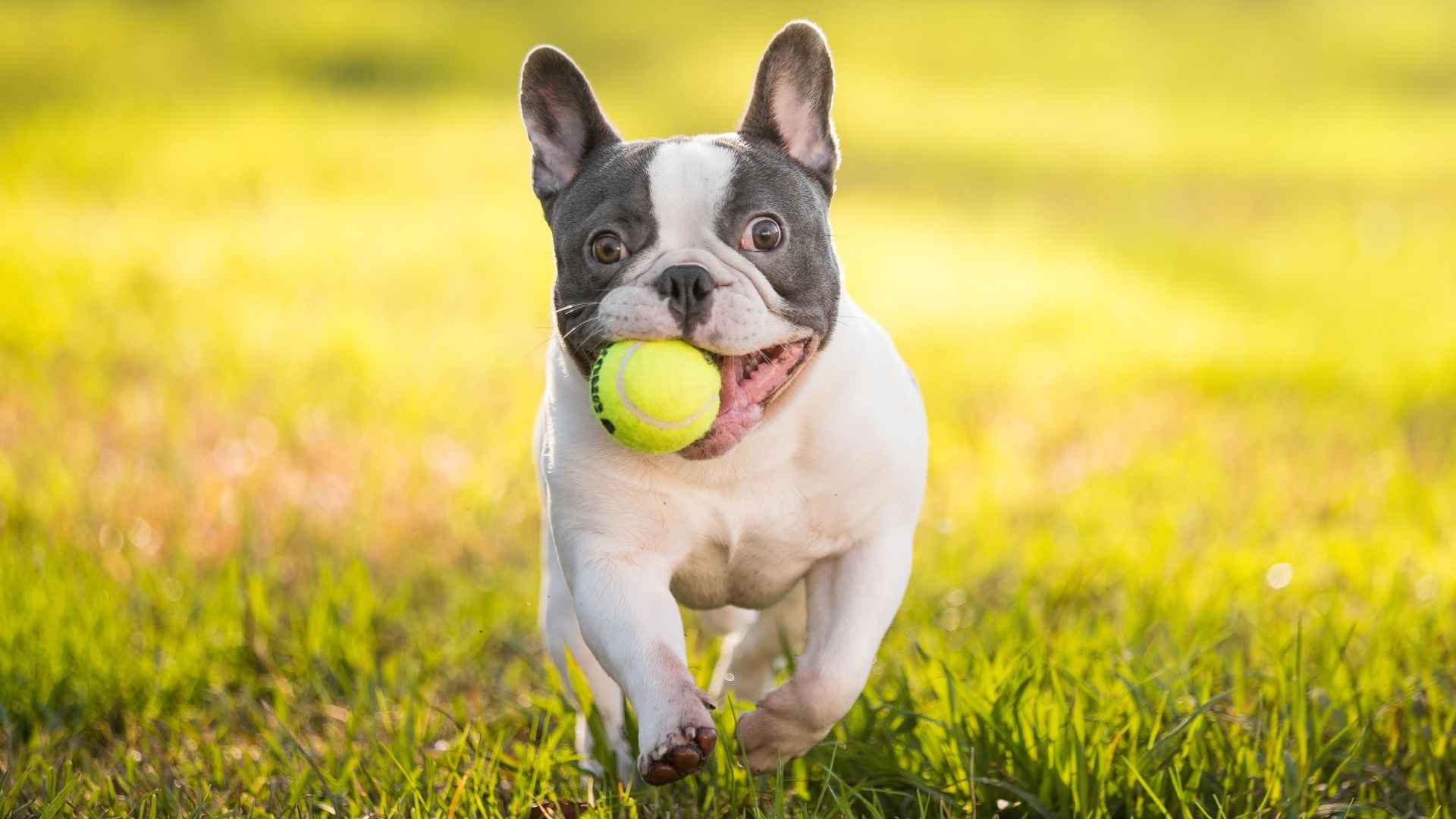Short-snouted dog breeds have a charm that’s impossible to ignore. Their wrinkled faces, compact muzzles, and expressive eyes create an instantly lovable appearance. But beyond their looks, these brachycephalic breeds come with unique traits that make them fascinating companions. Many dog lovers and dog owners appreciate their quirky personalities, affectionate nature, and distinct vocalizations.
Their short noses influence everything from their breathing to their behavior, making them different from long-snouted breeds. Some have deep-rooted histories, once guarding palaces or accompanying royals, while others have become modern favorites in city apartments.
Understanding these breeds is key to meeting their needs. Not all brachycephalic dogs have the same characteristics, but each one has a story. Let’s explore what makes these short-snouted dogs so special.
Did you know that short-snouted dogs often snore louder than humans? Their unique airway structure can create some of the most entertaining nighttime sounds!
Dog Breeds With Short Snouts
1. English Bulldog
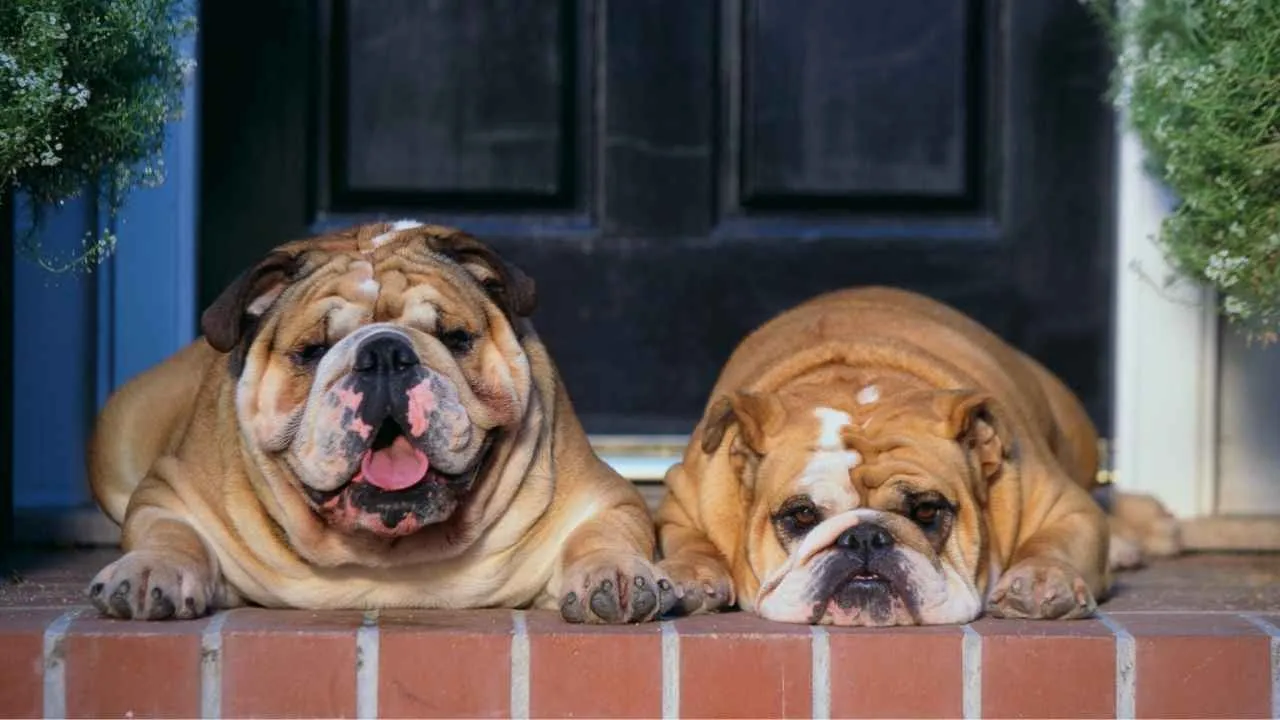
The English Bulldog is instantly recognizable with its short snout, muscular frame, and signature loose skin. This breed has a long history, originally bred for bull-baiting. Today, it is known for its calm nature and distinctive rolling gait.
Despite its tough exterior, this breed has a surprisingly easygoing attitude. English Bulldogs are not overly active, making them suitable for various living environments. However, they can be stubborn, so consistent training is necessary to establish boundaries and encourage good behavior from an early age.
Their facial structure makes breathing a key concern. Bulldogs are sensitive to heat and require proper ventilation, especially in warmer climates. Overexertion can lead to respiratory distress, so exercise should be carefully moderated, focusing on short, controlled walks.
Bulldogs have a unique approach to social interactions. They can be reserved with strangers but tend to develop strong attachments to familiar people. While they are not the most vocal breed, they do communicate through snorts, grumbles, and expressive body language.
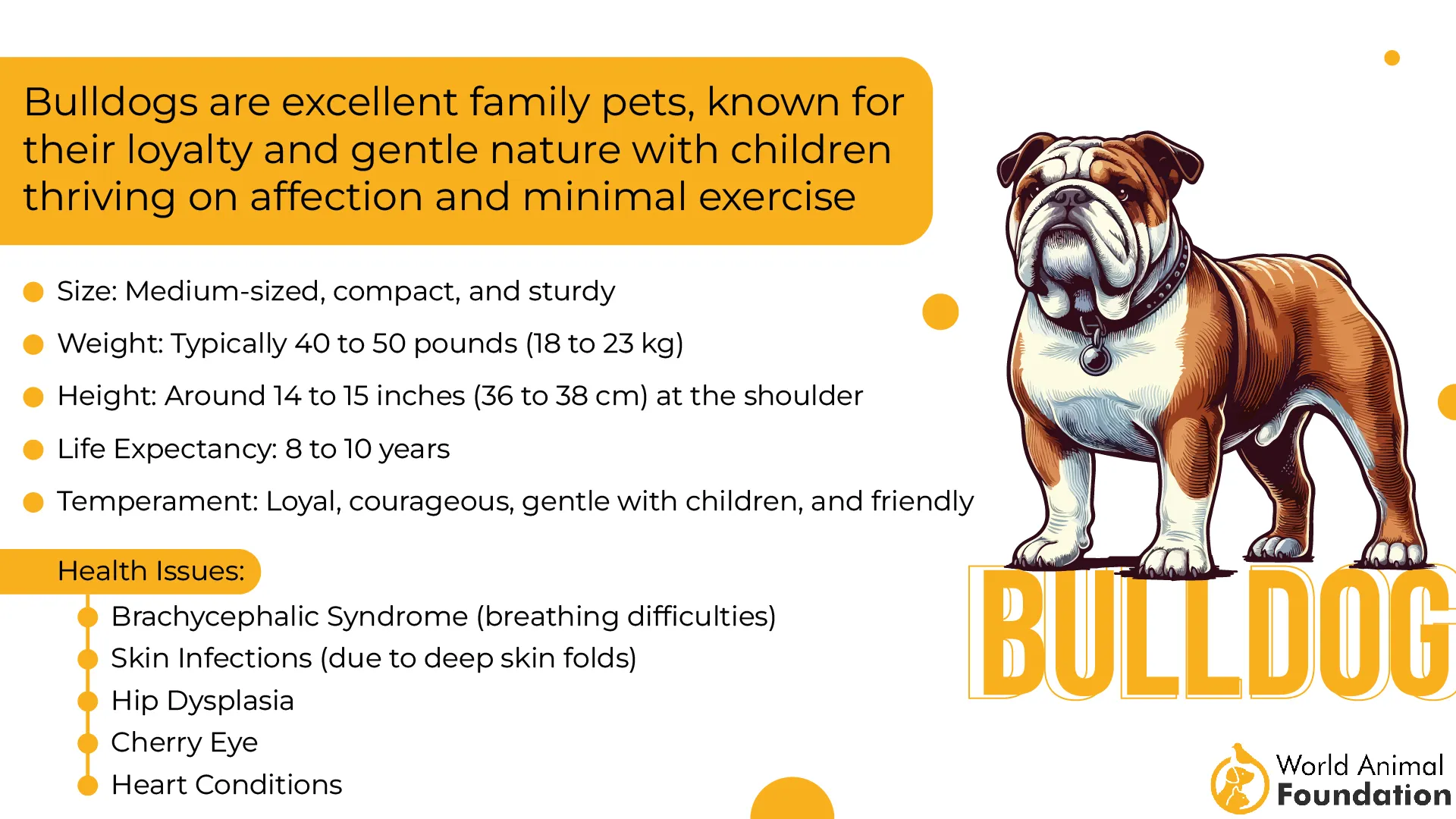
According to AKC, grooming is relatively simple, but their wrinkles need frequent cleaning to prevent infections. A balanced diet is essential, as Bulldogs are prone to obesity. Their compact structure means extra weight can put strain on their joints, affecting mobility and overall health.
Fun Fact
Bulldogs are known for their unusual sleeping positions. They often sleep on their backs with legs stretched out, a posture that helps regulate breathing and keeps them cool during naps.
2. French Bulldog
With its short snout, oversized ears, and compact frame, the French Bulldog has a charming appearance that stands out. This breed has roots in 19th-century France, where it was favored by lace workers before becoming a popular urban companion known for its distinct personality.
French Bulldogs are naturally playful and enjoy engaging with their surroundings. Their enthusiasm makes them entertaining, but they also have a relaxed side, preferring short bursts of activity over prolonged exercise. Due to their compact airway, they should avoid strenuous physical exertion.
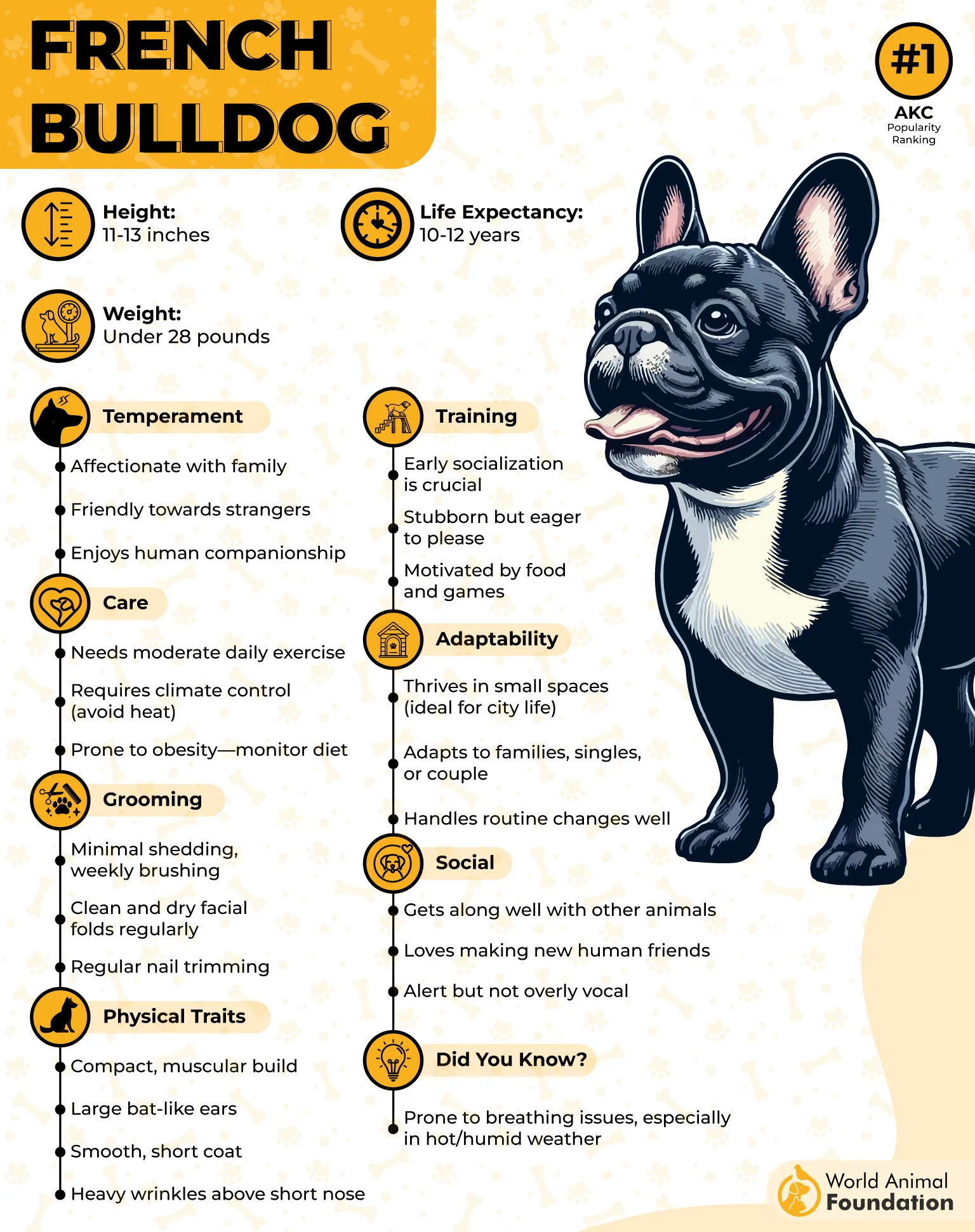
They have a surprisingly expressive nature, often using a combination of vocalizations and quirky body movements to communicate. French Bulldogs produce a variety of snorts, grunts, and even “talking” sounds that set them apart.
Due to their short coat, grooming requirements are minimal. However, their facial wrinkles require regular cleaning to prevent irritation. Additionally, they can be prone to skin sensitivities, so selecting high-quality food and monitoring allergies is essential for overall health.
Sleeping patterns can be unpredictable with this breed. French Bulldogs are known to snore, sometimes quite loudly, due to their short nasal passages. Providing a comfortable sleeping area with good airflow helps minimize nighttime disturbances for both the dog and its owner.
Fun Fact
French Bulldogs’ compact bodies make swimming a challenge. Their short legs and dense muscles mean they struggle to stay afloat, requiring a life vest if they are near water.
3. Bullmastiff
The Bullmastiff has a commanding presence, blending strength with agility. Originally developed to guard estates, this breed has a distinctively broad skull and short muzzle, enhancing its ability to detect scents and respond quickly when needed.
Despite their imposing size, Bullmastiffs are known for their measured temperament. They assess situations carefully before reacting, making them effective deterrents without excessive barking. Their natural guarding instincts require firm training to ensure proper social behavior.

According to WebMD, maintaining their physical condition is essential. While not highly active, Bullmastiffs benefit from structured exercise to keep their muscles strong. Due to their brachycephalic features, they are prone to overheating, making hydration and temperature control crucial.
Bullmastiffs form strong bonds with those they trust. They are highly observant and can read body language effectively. This makes them particularly responsive to their environment, adapting their behavior based on the tone and energy of a situation.
Their short coat is easy to maintain, but shedding can increase during seasonal changes. Regular brushing helps remove loose hair while keeping their skin healthy. Checking their facial folds periodically prevents moisture buildup, reducing the risk of skin infections.
Fun Fact
Bullmastiffs have a history as silent protectors. Unlike other guard dogs, they were bred to apprehend intruders without barking, relying on their size and strength to deter threats rather than alerting through loud noises.
4. Brussels Griffon
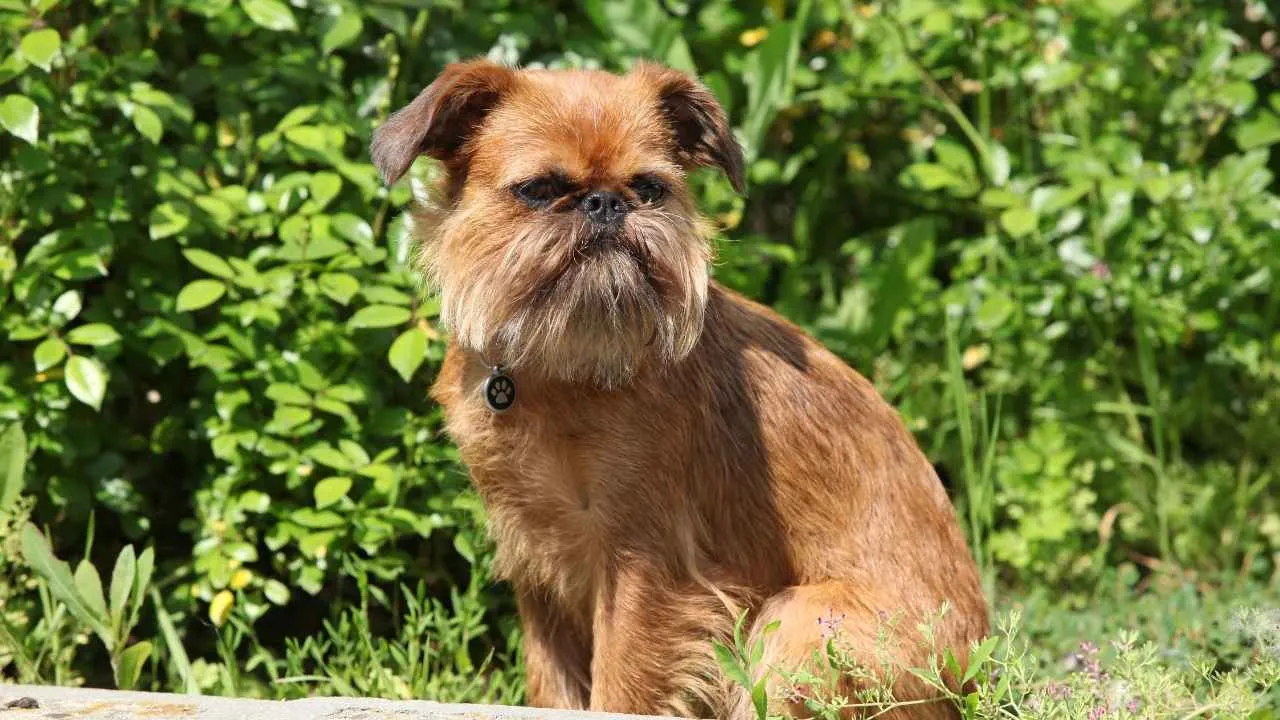
The Brussels Griffon carries its short snout with an undeniable air of confidence. Originally bred for catching rodents, this toy breed has a surprisingly alert nature. Their compact bodies and expressive faces make them stand out in any setting.
Their intelligence allows them to grasp commands quickly, but they often exhibit an independent streak. Training requires patience and consistency, as their sharp minds can sometimes lead to stubbornness. Early socialization helps shape them into well-behaved companions.
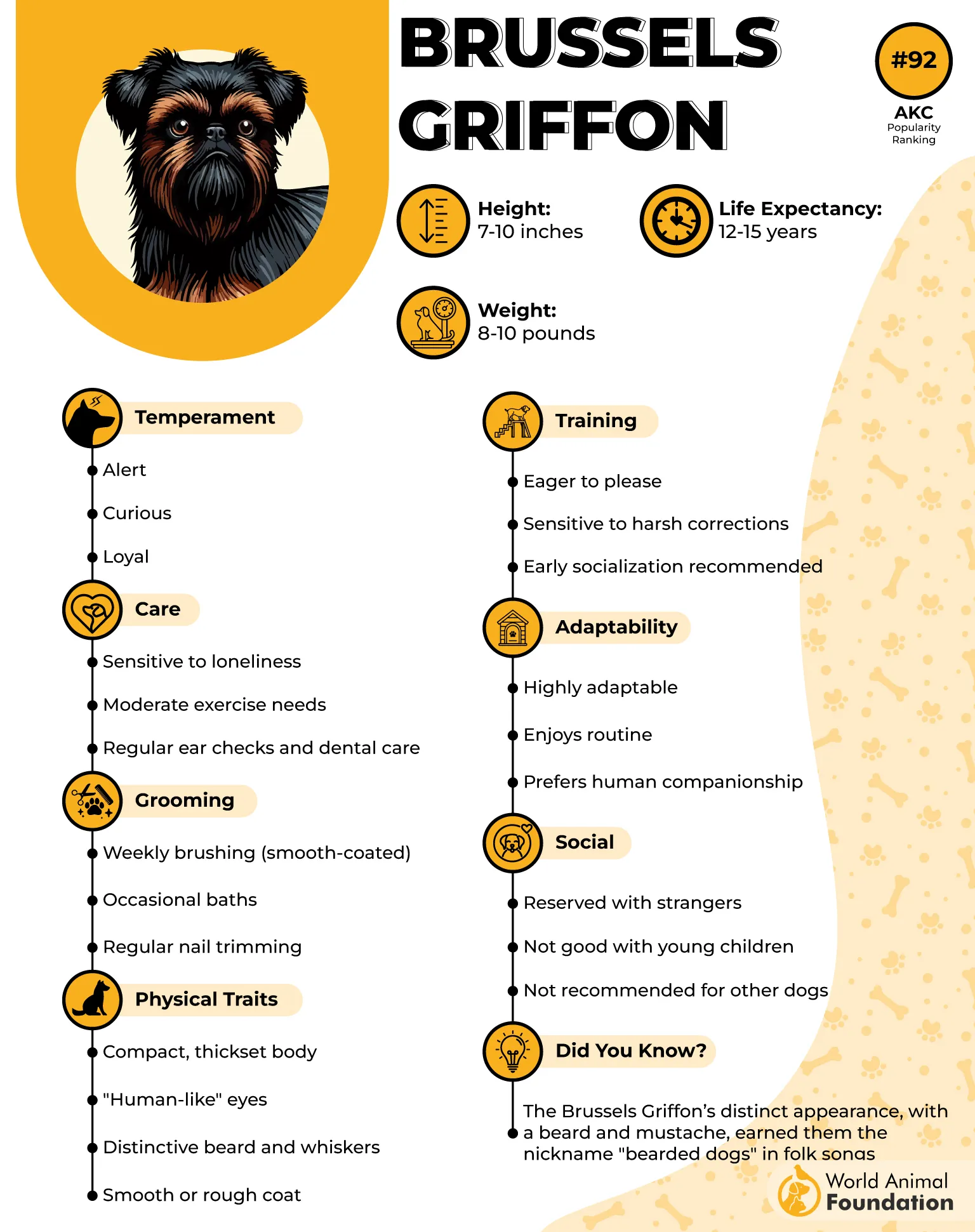
This breed is known for its lively energy, making daily activity essential. Despite their small size, they thrive on engaging playtime and interactive exercises. Mental stimulation is equally important to prevent boredom-related behaviors.
Brussels Griffons require regular grooming due to their dense, wiry coats. Routine brushing helps prevent matting, while occasional trims keep them looking their best. Their short snouts make them prone to heat sensitivity, needing extra care in warm weather.
They form strong bonds with their families and are naturally protective. Their keen senses allow them to act as tiny watchdogs, alerting their owners to any unusual activity. Their expressive faces often reflect their moods, making interactions even more entertaining.
Fun Fact
Brussels Griffons were famously featured in Hollywood films, where their human-like expressions and comedic personalities stole the show.
5. Chow Chow
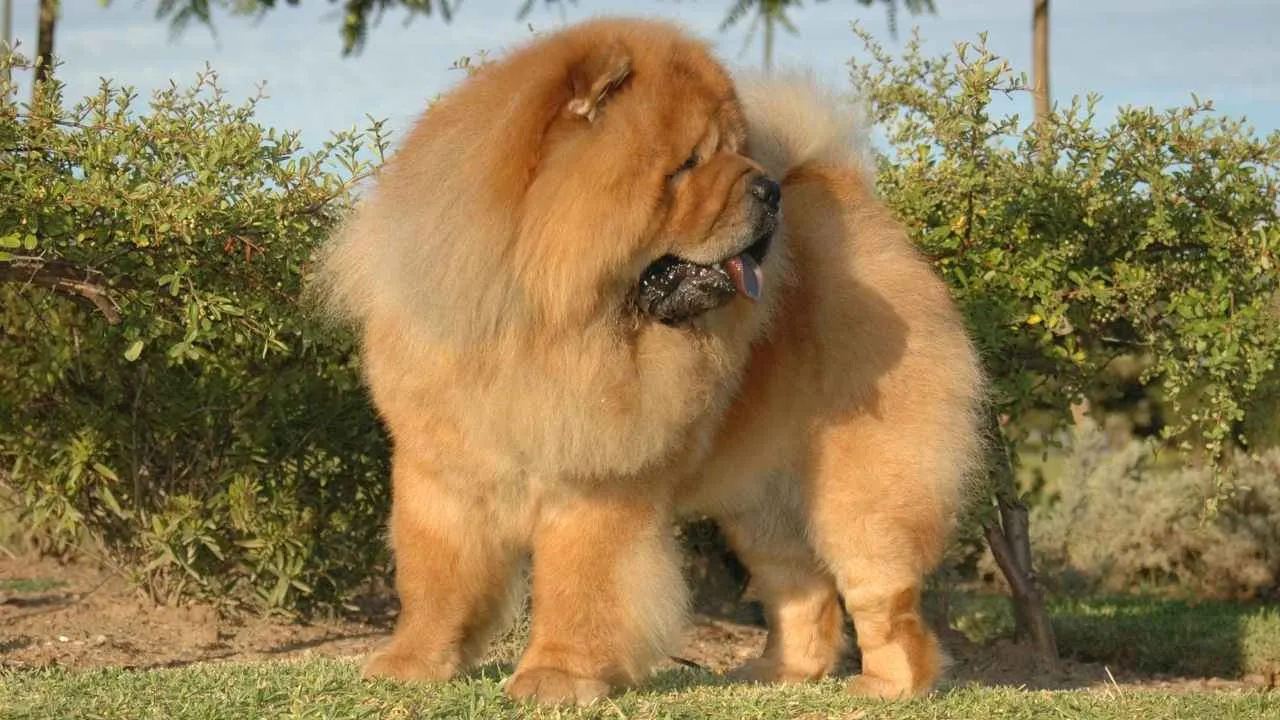
The Chow Chow’s short snout pairs with its thick mane, giving it a lion-like appearance. Originally bred as a working dog in China, this breed is known for its dignified and independent nature. Their distinct scowling expression adds to their signature look.
Chow Chows have a reserved personality, making them naturally aloof toward strangers. However, they are deeply loyal to their families. Proper training and early exposure to different environments help them develop into well-mannered dogs.
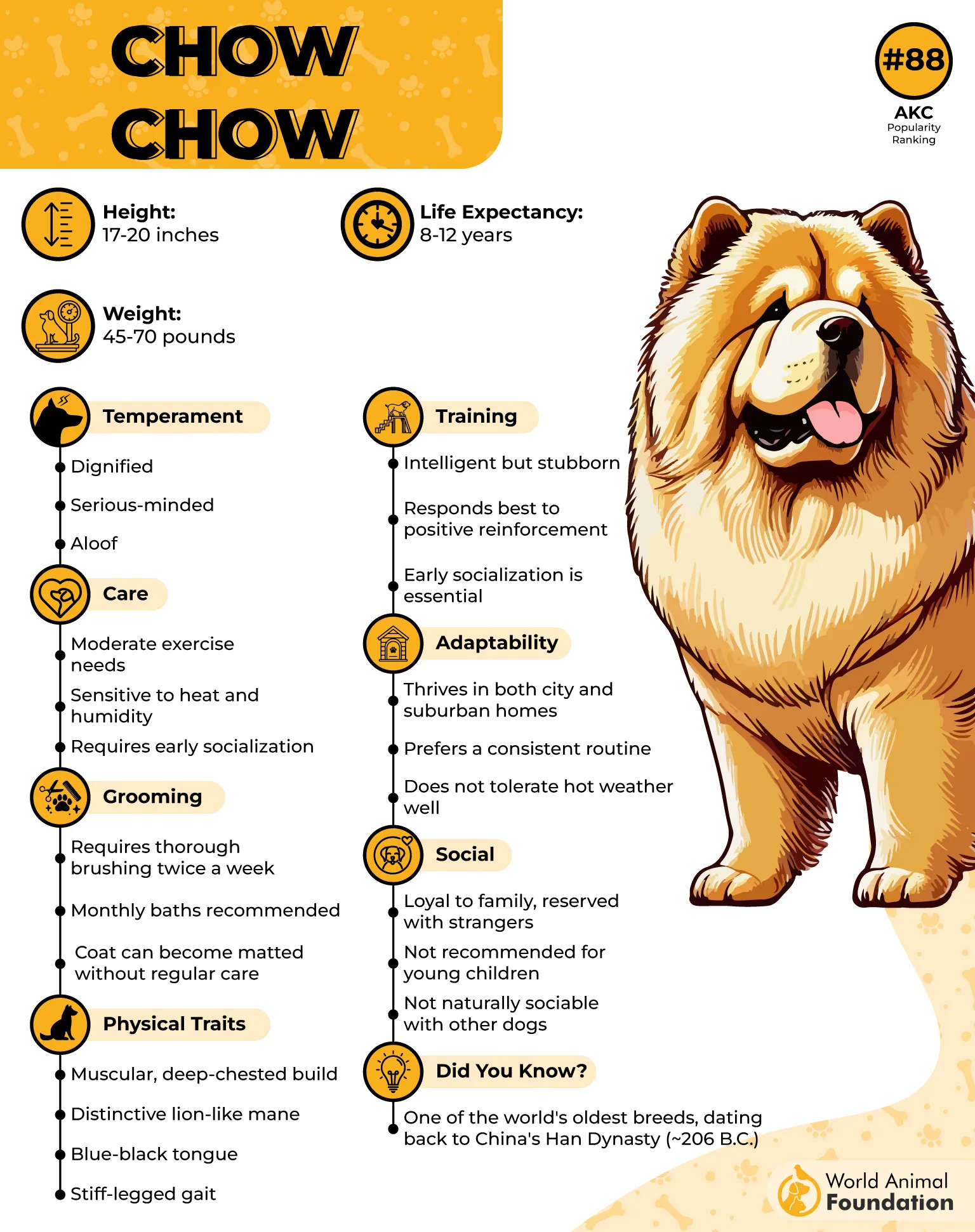
Exercise should be moderate, as this breed isn’t highly active. Short walks and play sessions suffice to keep them healthy. Due to their dense double coat and shortened muzzle, they are prone to overheating and require cool environments.
According to PetMD, grooming is a major responsibility of this breed. Their thick fur demands frequent brushing to prevent tangles and excess shedding. Routine coat maintenance keeps their skin healthy and reduces the risk of irritation or discomfort.
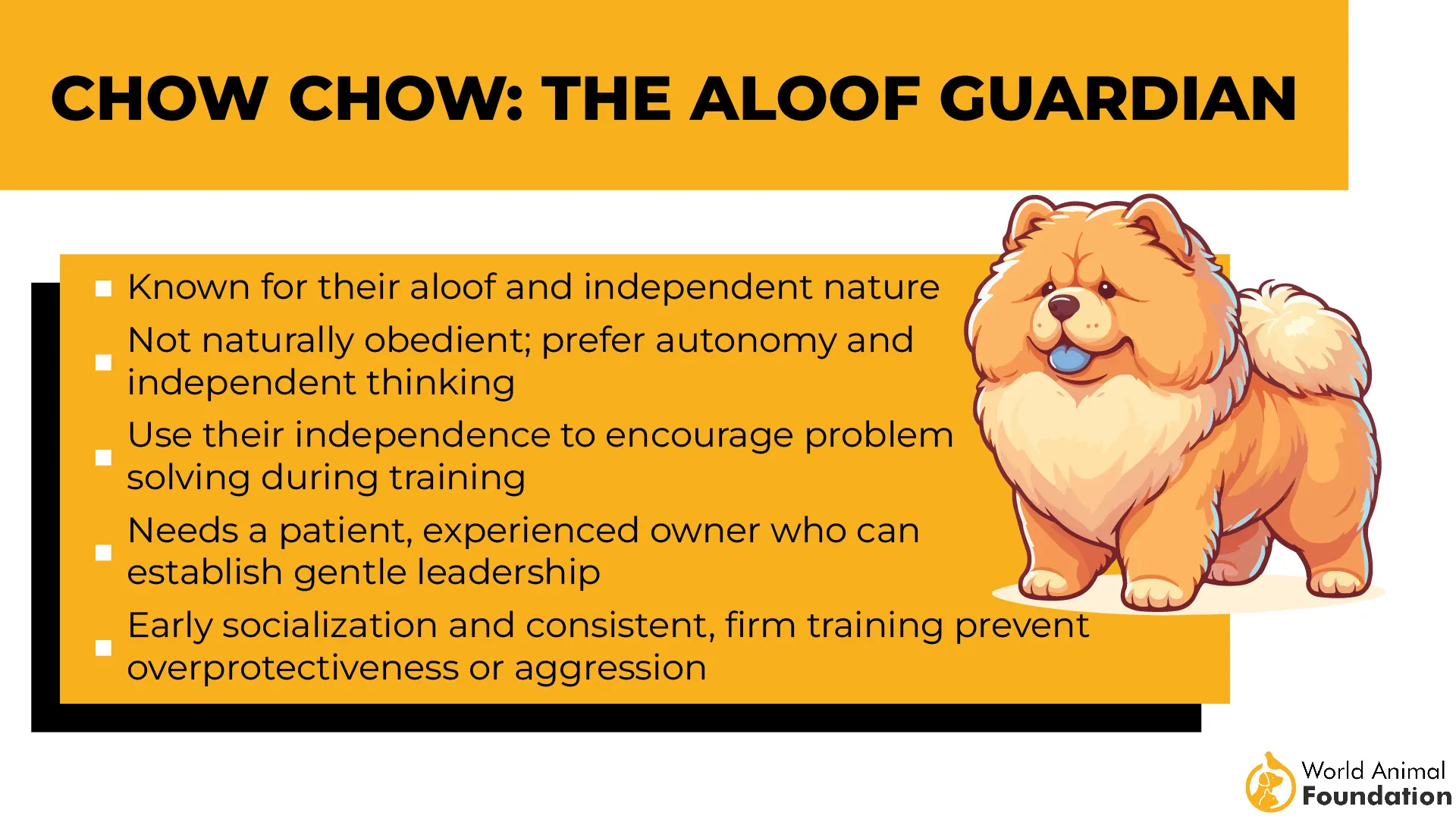
Despite their independent nature, they appreciate structured routines. They respond best to firm, consistent leadership, and their intelligence allows them to learn effectively. Their regal demeanor makes them fascinating to observe and interact with.
Fun Fact
Chow Chows have a unique blue-black tongue, a trait found in very few dog breeds worldwide.
6. Pekingese
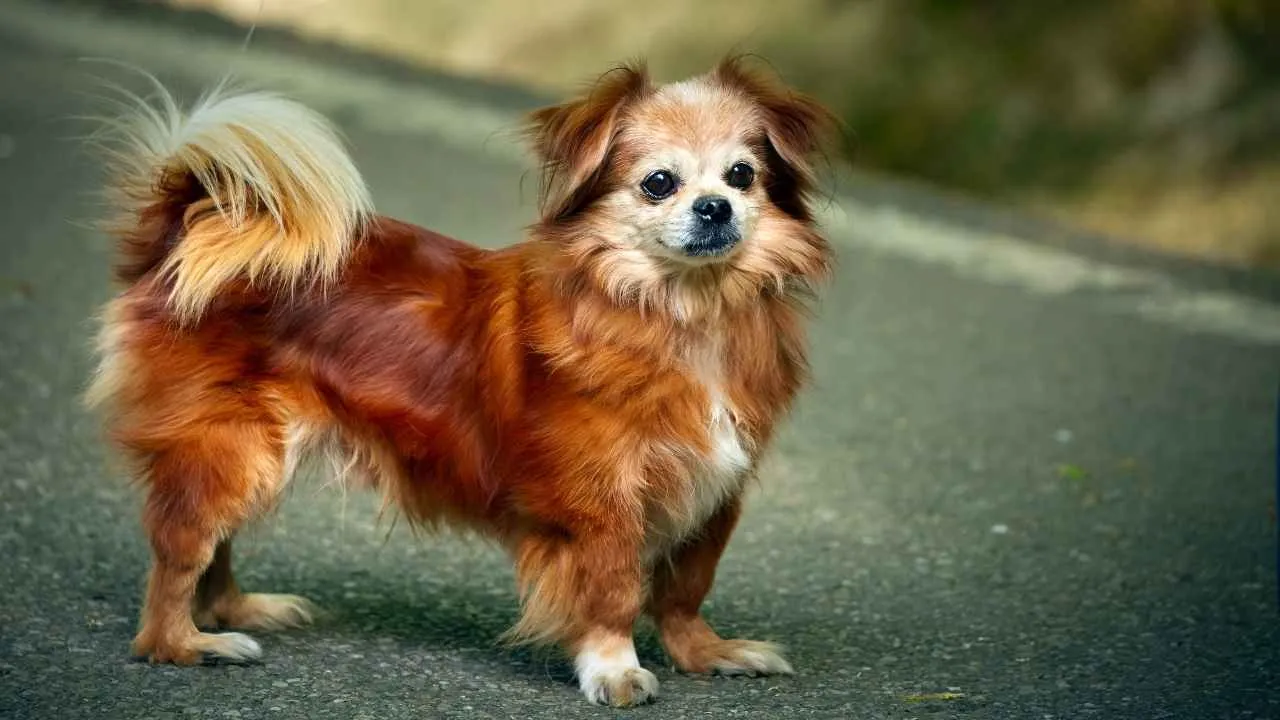
The Pekingese is a breed that carries itself with an almost royal presence. Originating from ancient China, these dogs were once reserved for royalty. Their compact size, short snout, and flowing coat make them a distinctive breed.
Despite their small stature, Pekingese dogs have a surprisingly bold personality. They are naturally self-assured and don’t shy away from asserting their independence. They enjoy leisurely strolls but aren’t highly active, making them ideal for calm households.
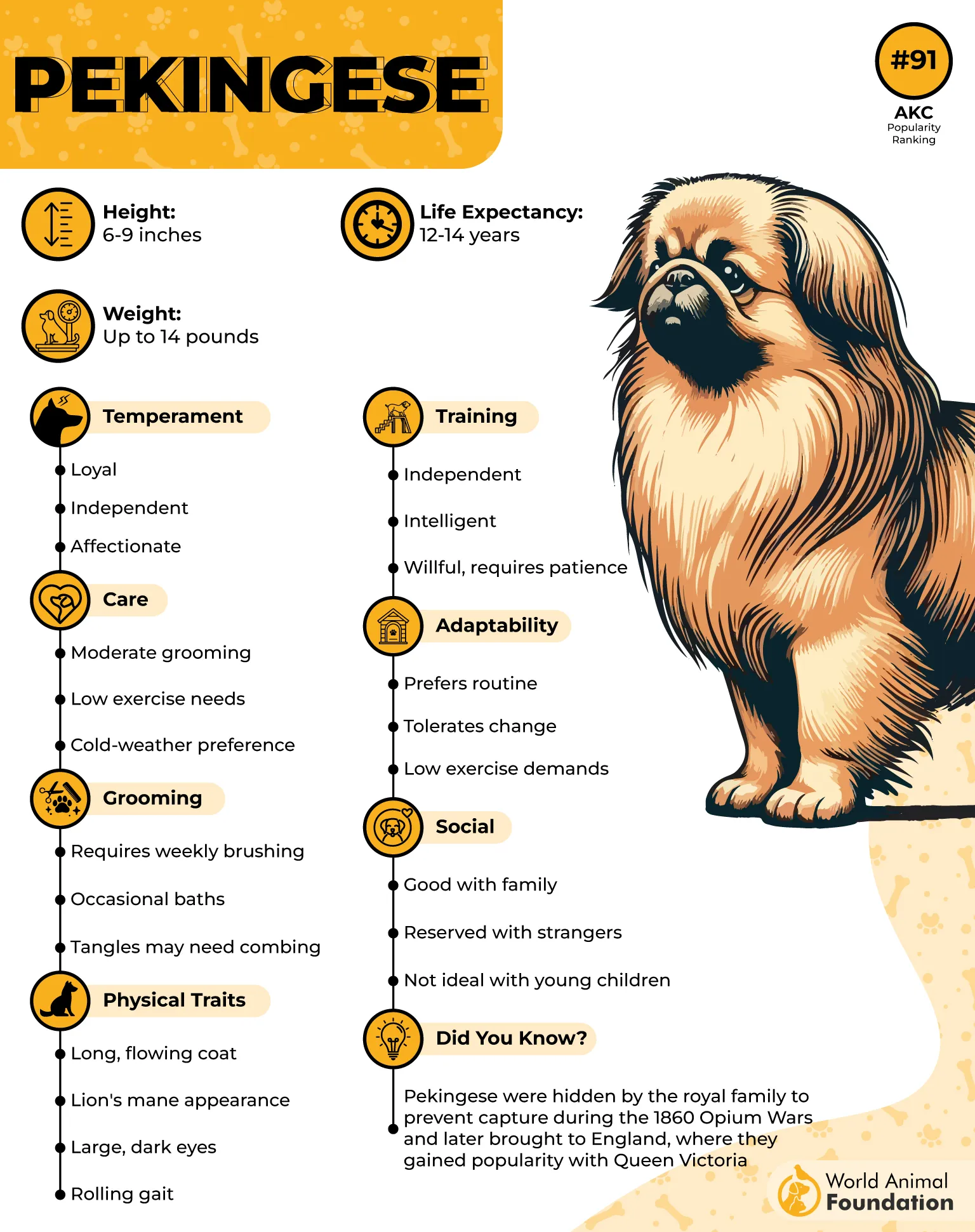
Their long, luxurious coats require consistent upkeep. Daily brushing prevents tangles, while regular eye and facial cleaning helps avoid irritation. Their short noses make them susceptible to breathing difficulties, especially in hot or humid conditions.
Training a Pekingese requires patience, as they can be quite strong-willed. Positive reinforcement and consistency yield the best results. Though they may seem stubborn at times, they form deep connections with their families and remain attentive to household routines.
They often exhibit a cat-like demeanor, preferring to observe their surroundings rather than immediately engage. Their confident nature and distinctive appearance make them a breed that commands admiration wherever they go.
Fun Fact
Pekingese dogs were once carried in the sleeves of Chinese emperors as symbols of status and wealth.
7. Pug
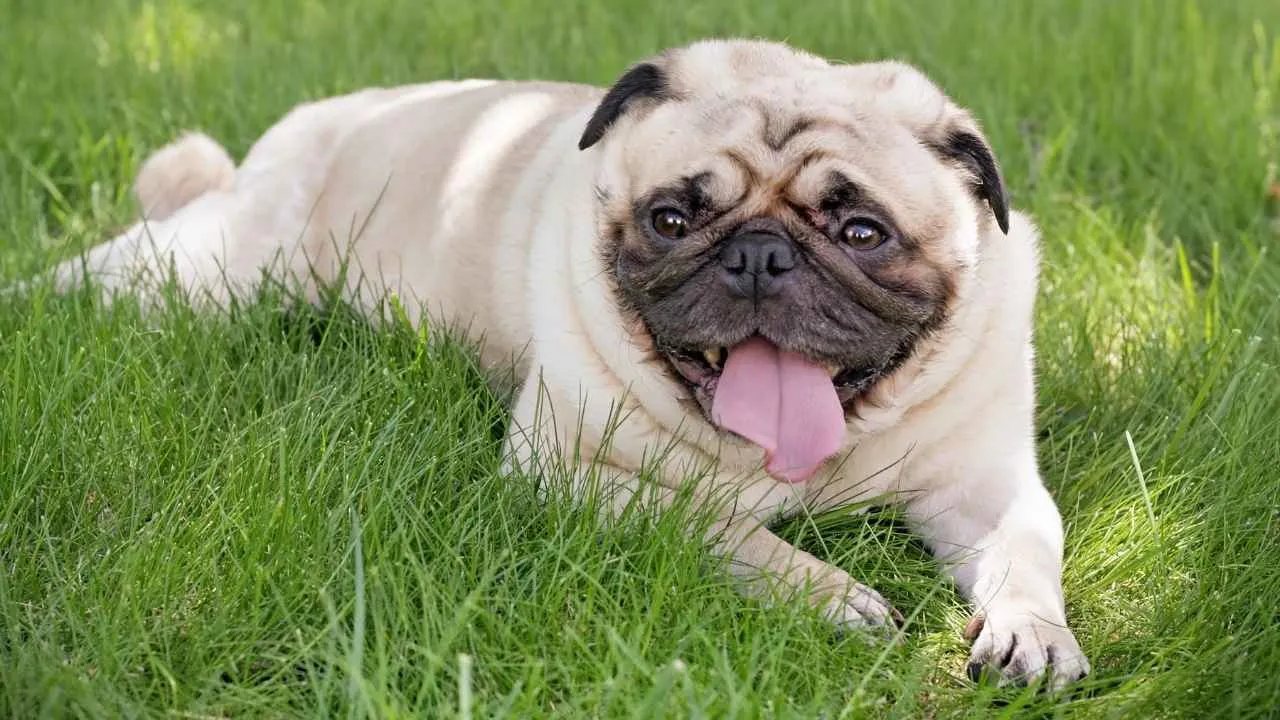
Few breeds wear their short snouts as proudly as the Pug. These small, sturdy dogs have been adored for centuries, dating back to their origins in ancient China. Their distinctive facial wrinkles and curled tails add to their playful charm.
Pugs are naturally affectionate and thrive on human interaction. They enjoy being in the center of the action and often follow their owners around the house. Their lively personality makes them entertaining companions with a knack for making people laugh.
Despite their small size, Pugs have a hearty appetite and require portion control to maintain a healthy weight. Regular exercise, such as short walks and active play sessions, helps keep them fit and prevents obesity-related issues.
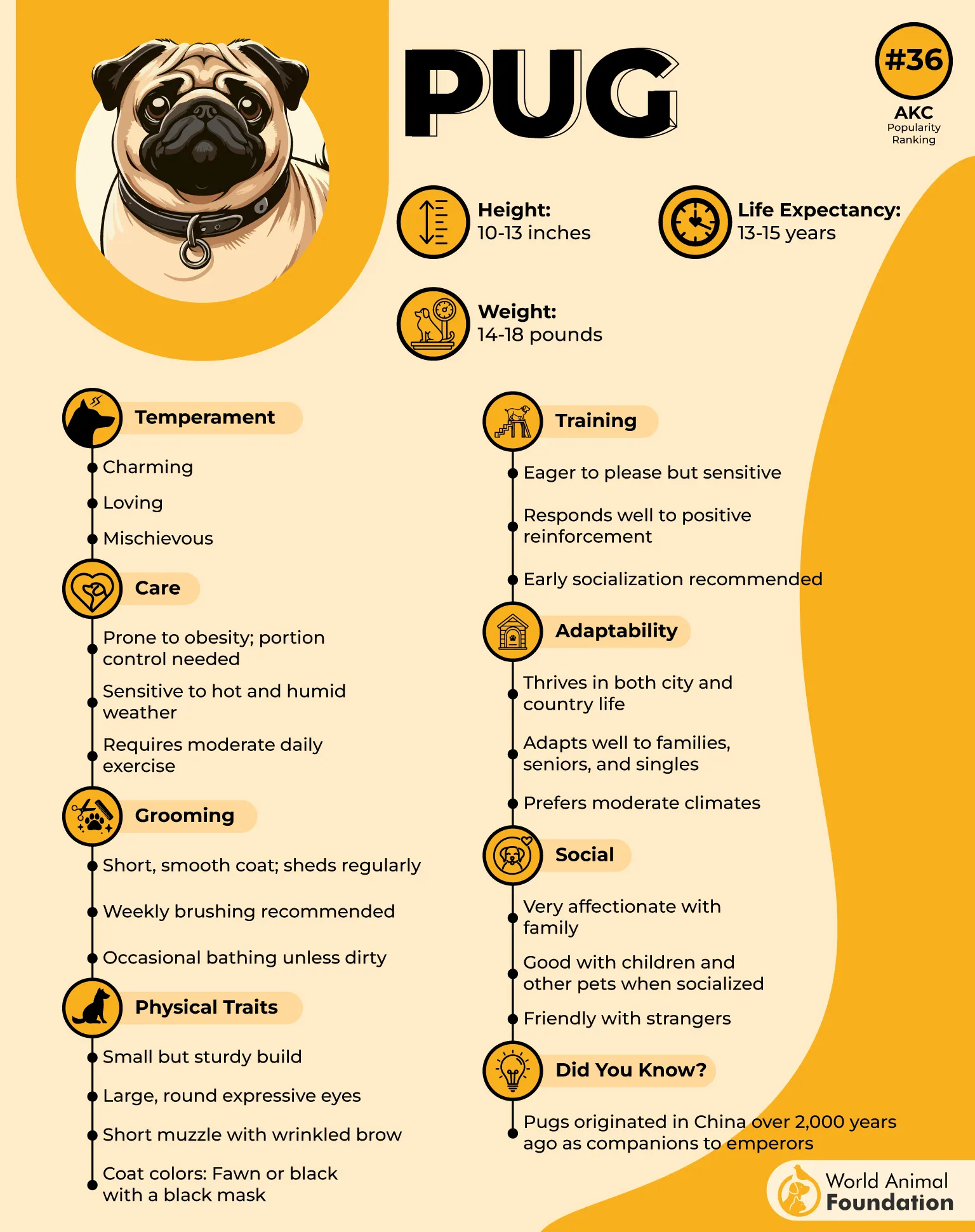
Their facial folds require careful cleaning to prevent irritation or infections. Additionally, their short muzzles make them prone to breathing challenges, so they do best in cool environments with moderate activity levels.
Pugs are incredibly adaptable and adjust well to various living situations. Their friendly disposition makes them easygoing, and their signature snorting sounds add to their amusing character.
Fun Fact
Pugs were cherished by Chinese emperors, often living in luxurious settings with their own guards.
8. Dogue de Bordeaux
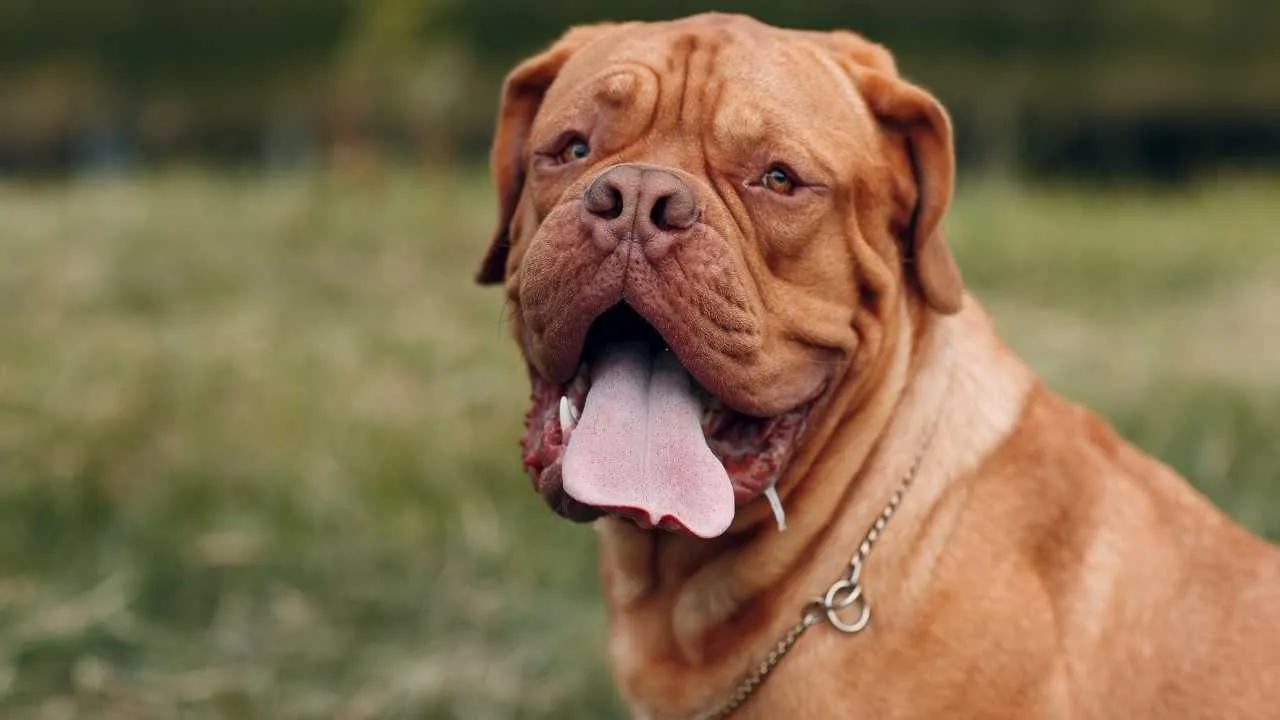
The Dogue de Bordeaux carries its massive head and short snout with undeniable power. Known for its strength, this French breed was historically used for guarding and pulling heavy loads. Its muscular frame reflects its impressive working heritage.
Despite its imposing size, this breed has a calm demeanor. They form strong bonds with their families and are known for their unwavering loyalty. Early training is crucial to ensure they develop into well-mannered, well-adjusted dogs.
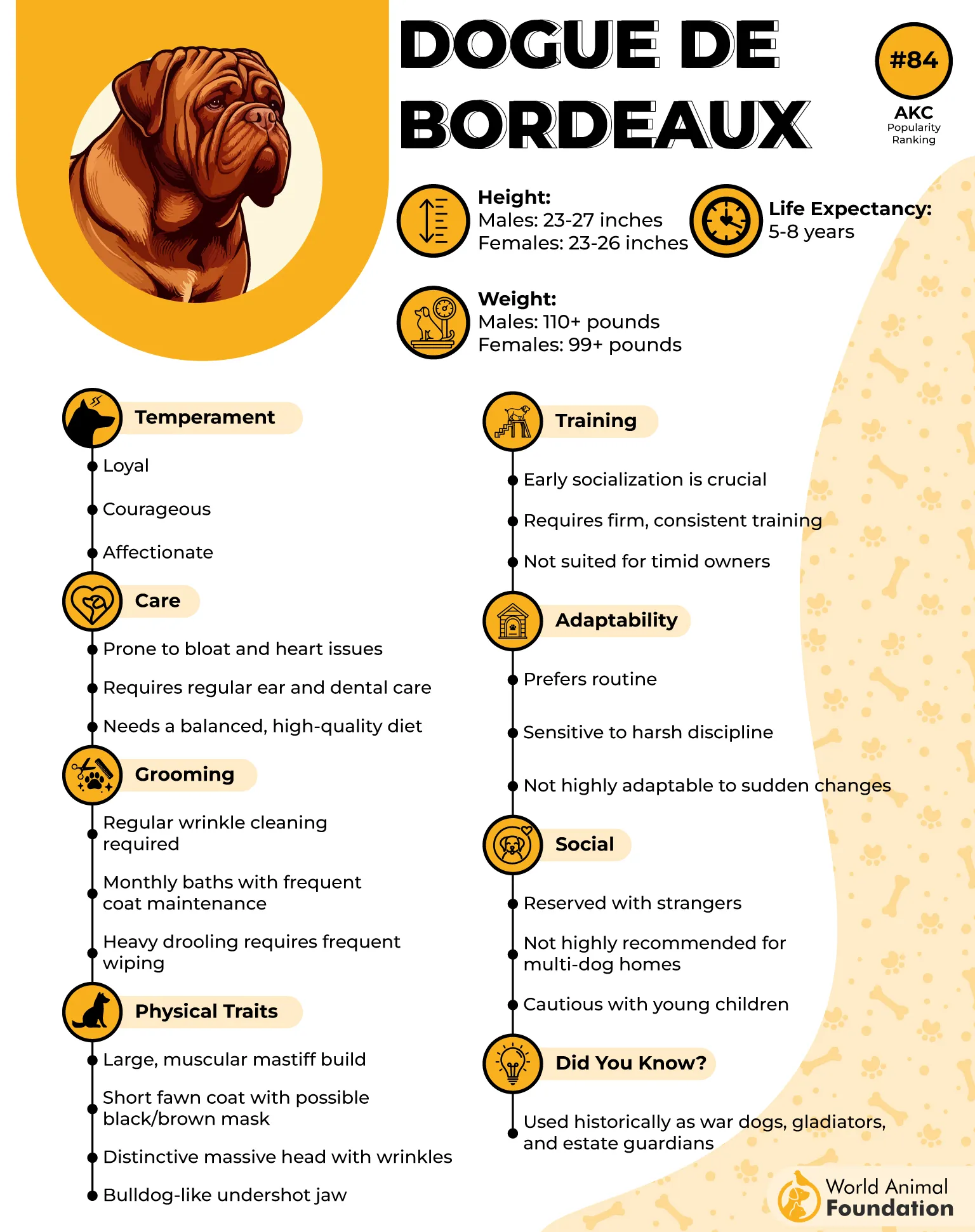
Regular physical activity is important, but their exercise needs are moderate. Too much strain on their joints can be detrimental, so controlled play and short walks help maintain their overall health without causing stress on their large frames.
Their short coats are relatively low-maintenance, but routine cleaning of facial wrinkles is necessary. Their shortened snouts make them susceptible to heat exhaustion, so they require cool, shaded environments during warmer months.
Though naturally protective, they respond well to firm guidance and structured training. Their watchful nature makes them excellent guardians while maintaining a composed presence in familiar surroundings.
Fun Fact
The Dogue de Bordeaux gained widespread recognition after starring in the movie Turner & Hooch alongside Tom Hanks.
9. Neapolitan Mastiff

The Neapolitan Mastiff’s short snout is paired with one of the most distinctive features in the dog world—its loose, wrinkled skin. Originating in Italy, this ancient breed was historically used for guarding homes and properties.
These massive dogs are known for their protective instincts. Despite their size, they are generally calm and observant. They rely on their imposing presence rather than aggression to deter unwanted visitors.
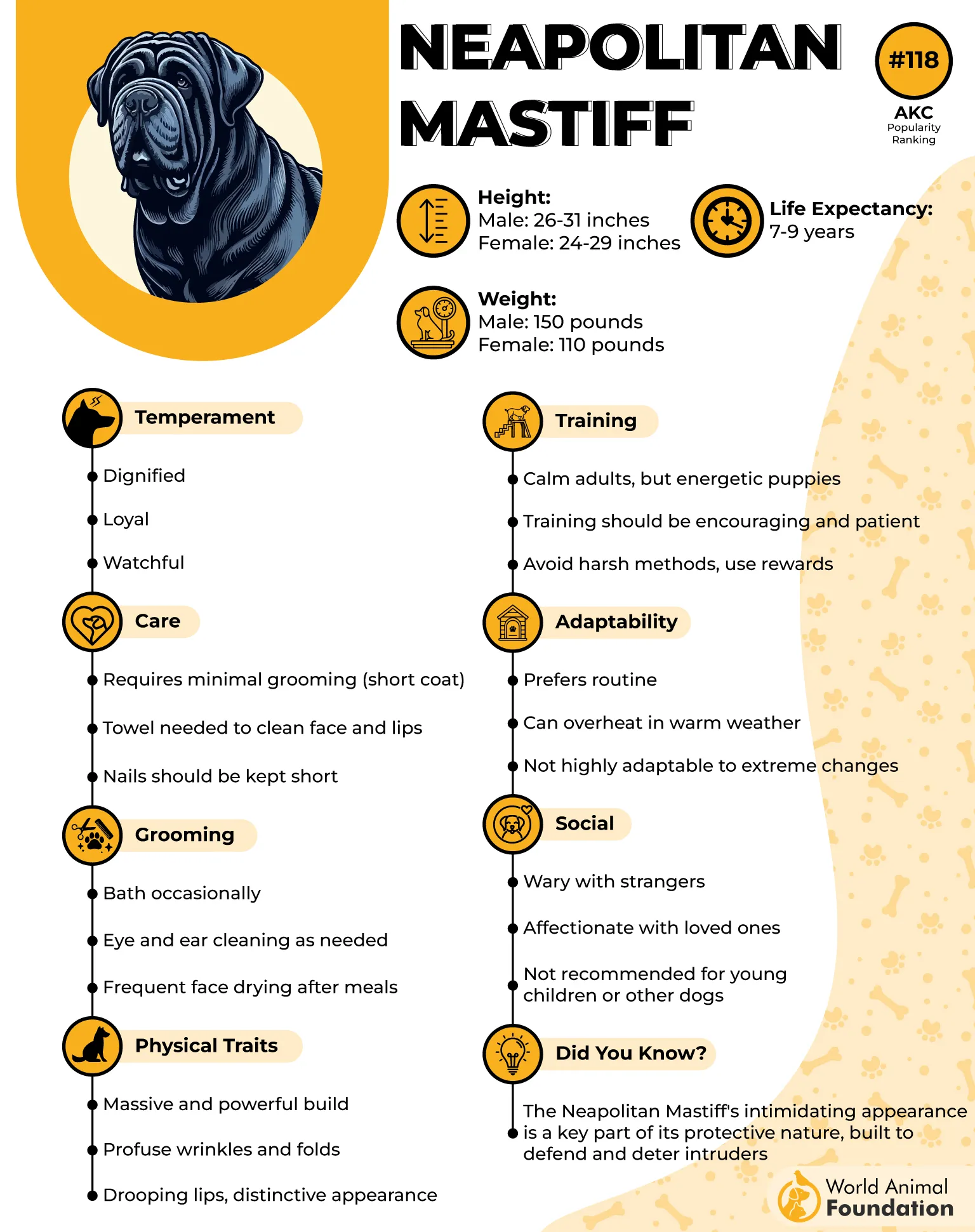
Exercise should be moderate to avoid unnecessary strain on their joints. Short walks and controlled play sessions are ideal. Their shortened muzzles make breathing difficult in hot weather, so they require proper shade and hydration.
Grooming is simple, but their wrinkles need regular attention to prevent infections. Their droopy eyes and lips require frequent cleaning, ensuring they remain comfortable and free of irritation.
Their strong-willed nature means they need a confident owner who can provide clear boundaries. Once trained, they become steadfast guardians who exude quiet confidence and loyalty.
Fun Fact
The Neapolitan Mastiff’s unique appearance made it the inspiration for Hagrid’s dog, Fang, in the Harry Potter films.
10. Boston Terrier
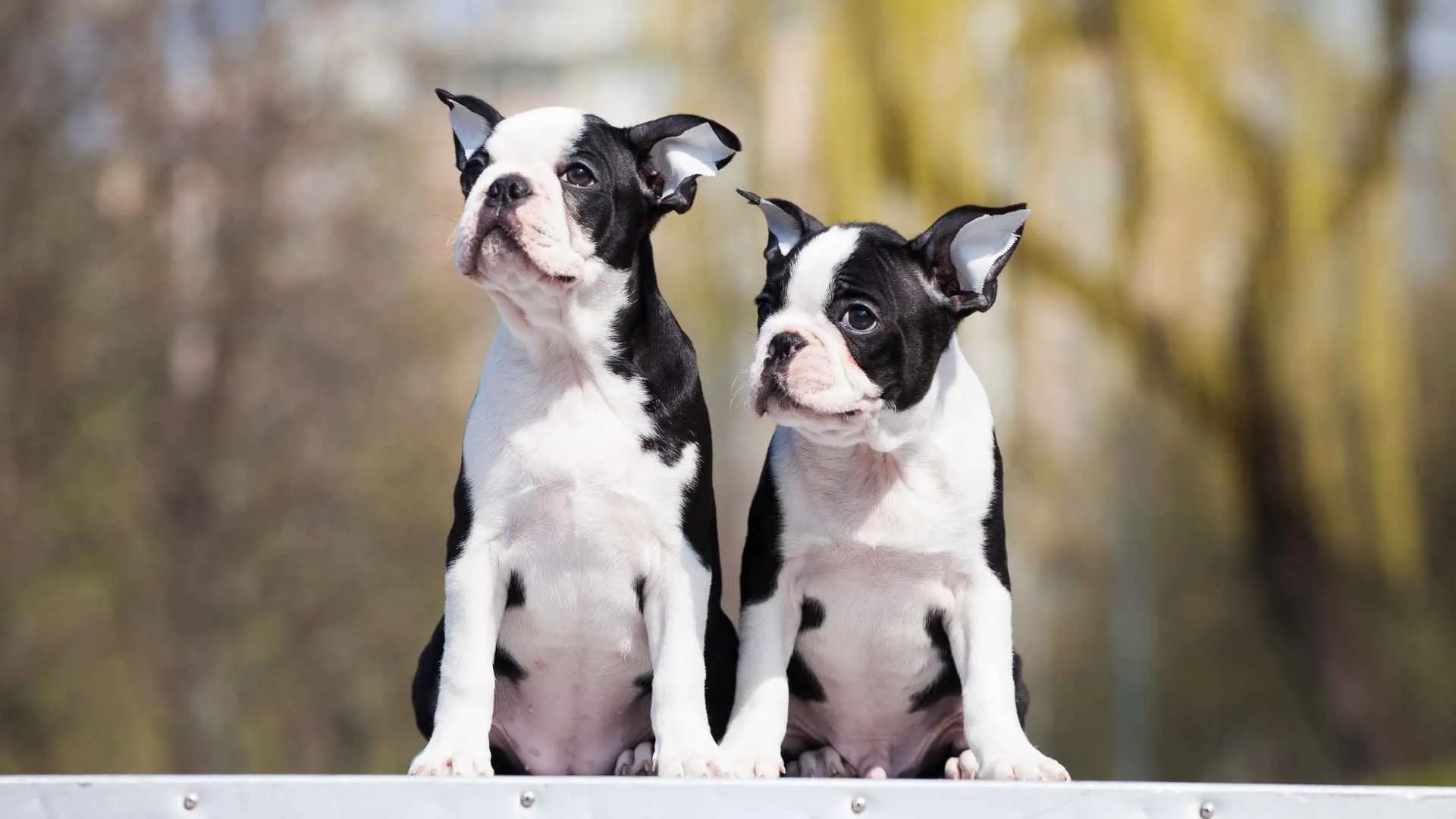
The Boston Terrier’s compact frame, short snout, and tuxedo-like markings give it a distinct charm. Originally bred in the United States, this breed has a lively personality and an undeniable sense of humor.
Purina states that Boston Terriers are intelligent and quick learners. They respond well to positive reinforcement, making training sessions enjoyable. Their eager-to-please attitude helps them excel in obedience and trick training with minimal effort.
Their small size makes them suitable for urban living. They enjoy short bursts of play and moderate walks to stay fit. Their energy levels are balanced, keeping them active without being overly demanding.
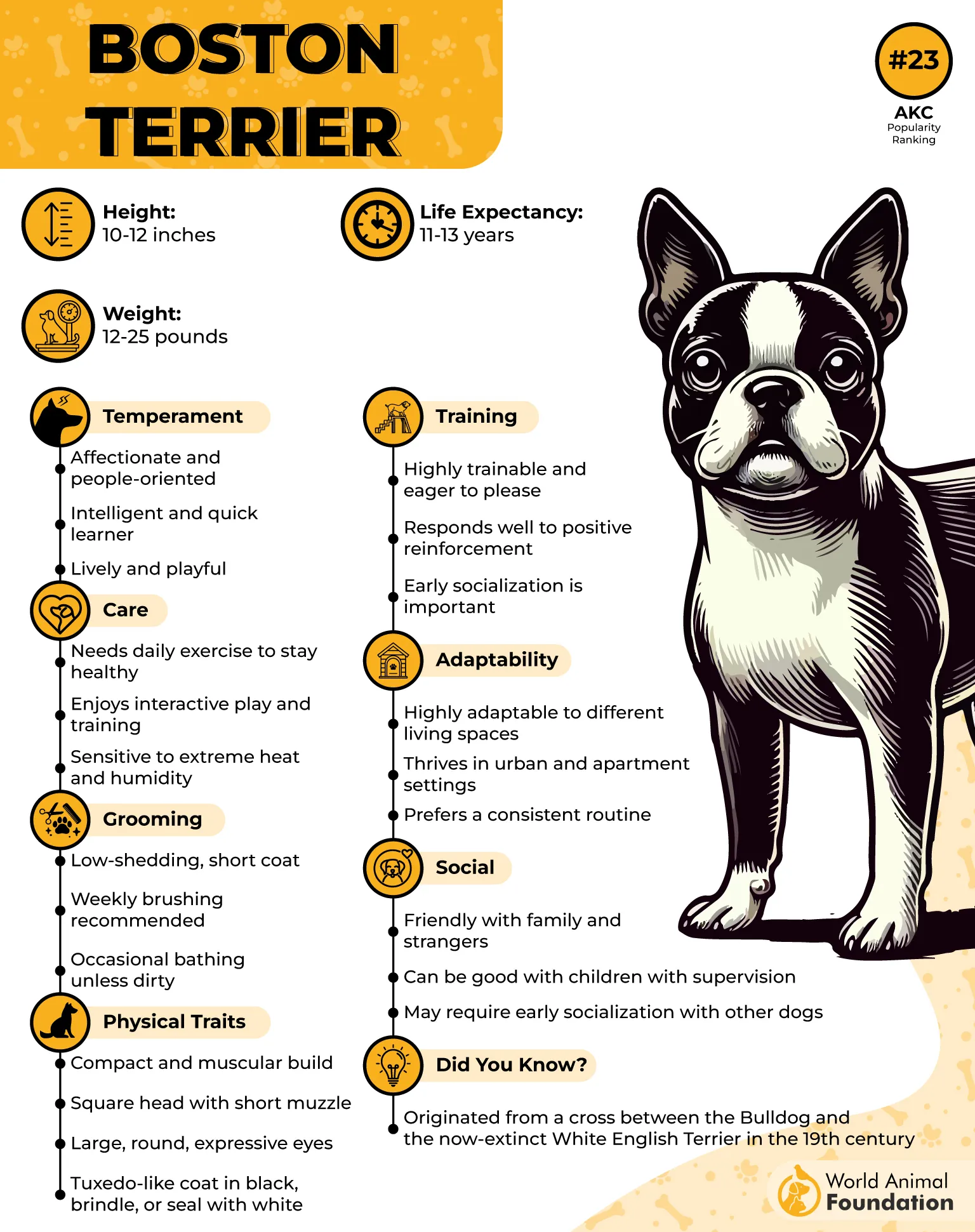
Routine facial cleaning is essential due to their prominent eyes and short snouts. They are prone to respiratory issues, requiring extra caution in hot or humid conditions.
These dogs thrive in social settings and enjoy human companionship. Their cheerful disposition makes them naturally engaging, always ready to bring smiles with their lively antics.
Fun Fact
Boston Terriers were the first official breed developed in the United States, earning the nickname “The American Gentleman.”
Conclusion
Short-snouted, flat-faced breeds bring a unique blend of charm, history, and personality. Their distinctive faces and endearing traits make them stand out wherever they go. Whether playful, protective, or affectionate, these brachycephalic dog breeds leave a lasting impression on their owners.
Caring for them requires attention to their needs, from managing their breathing to staying comfortable in different environments. Brachycephalic syndrome and brachycephalic obstructive airway syndrome are common concerns, leading to noisy breathing and other health problems. Their specialized care makes them rewarding companions for those who understand their quirks. With the right approach, they thrive and bring joy to households of all sizes.
While many well-known brachycephalic breeds have been highlighted, others, like the elegant Cavalier King Charles Spaniel and the charming Shih Tzu, also share the distinct short-snouted features that make these dogs so unique.
Each breed carries a legacy shaped by centuries of companionship, work, or nobility. Their presence enriches lives in countless ways, proving their appeal goes far beyond their adorable short snouts.


